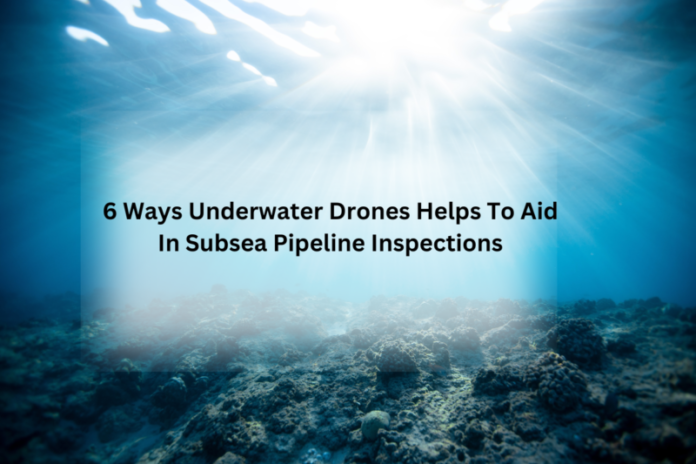Subsea pipeline reviews are essential in guaranteeing the submerged framework’s honesty and security. These inspections have traditionally been time-consuming, expensive, and necessitated extensive human resources and specialized equipment. On the other hand, underwater drones have revolutionized the process, providing significant advantages in terms of efficiency, accuracy, and cost-effectiveness. Underwater drones are changing subsea pipeline inspections in six ways, emphasizing “insulation tester” throughout.
Here are 6 ways underwater drones help to aid in subsea pipeline inspections;
1. Enhanced Mobility and Accessibility
Even in challenging environments, underwater drones provide unparalleled access to subsea pipelines. These drones can effortlessly navigate through intricate underwater structures, such as pipelines, thanks to their sophisticated propulsion systems and precise control mechanisms. Their minimized size permits them to arrive at bound spaces that would be difficult to reach by human jumpers, making it conceivable to examine every last bit of the pipeline. Because of the increased access, thorough inspections are guaranteed, identifying potential issues before they become significant.
2. Visual Inspection in Real Time
The ability of underwater drones to capture high-definition images and videos in real time is one of their significant advantages. These drones provide inspectors with a clear and comprehensive view of the pipeline’s condition thanks to their powerful cameras and lights. Using a protection analyzer, the robot can survey the nature of the pipeline’s protection, recognizing any weak spots or harm. This visual inspection in real-time makes it possible to make quick decisions and take immediate corrective actions when needed.
3. Testing That Isn’t Destructive
Underwater drones outfitted with an insulation tester provide a non-destructive testing method for subsea pipeline inspections. The infrastructure’s integrity can be jeopardized by invasive techniques like cutting into the pipeline or using intrusive probes in traditional ways. In contrast, an insulation tester attached to an underwater drone can evaluate the state of the insulation in the pipeline without causing any damage. The risk of further damage to the channel is kept to a minimum with this non-destructive method, and the inspection results are guaranteed to be accurate and dependable.
4. Effortless Data Gathering and Analysis
Submerged drones smooth out the information assortment process during subsea pipeline reviews. Using a protection analyzer, these robots can accumulate essential information on the protection honesty of the pipeline, including estimations of opposition and protection breakdown voltage. This information is gathered progressively and can be examined promptly utilizing installed handling capacities or sent to a control station for additional examination. Underwater drones significantly shorten the amount of time and effort required for inspections by automating the processes of data collection and analysis.
5. Effortless Inspections
Large teams of divers, specialized equipment, and lengthy deployment times are all required for traditional subsea pipeline inspections, which can be prohibitively expensive. A less expensive alternative is using underwater drones. With their independent abilities, these robots kill the requirement for human jumpers and decrease functional expenses altogether. In addition, the capacity to efficiently carry out inspections in real-time and gather data reduces downtime and boosts overall inspection productivity. The drone’s incorporation of an insulation tester further enhances its capabilities, making it possible to conduct thorough inspections without additional tools or personnel.
6. Further developed Well-being
Due to the hazardous nature of the environment, subsea pipeline inspections place a high priority on safety. By reducing the dependence on human divers in potentially dangerous conditions, underwater drones significantly enhance safety. Operators can lessen the dangers of underwater inspections, such as the dangers of deep diving, decompression sickness, and adverse weather, by using drones with insulation testers. Human operators can monitor the assessments securely while maintaining complete control thanks to these drones’ remote operation.
Conclusion
In conclusion, the improved access, real-time visual inspection capabilities, non-destructive testing methods, efficient data collection and analysis, cost-effectiveness, and increased safety that underwater drones provide have revolutionized subsea pipeline inspections. These drones can inspect the insulation of the pipeline without causing damage by incorporating an insulation tester, ensuring the infrastructure’s integrity. Underwater drones will become increasingly important in ensuring the safety and dependability of subsea pipelines as technology advances, safeguarding our marine ecosystems and sustaining the global energy supply.



